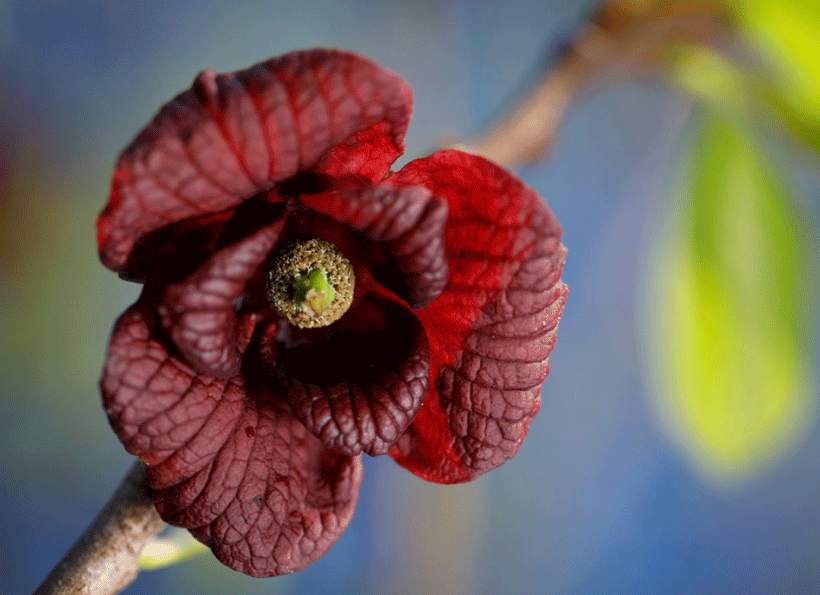The International Pawpaw Conference and the Ohio Pawpaw Festival both took place September, and last month, Country Folks Grower went into detail about some of the best cultivars to consider for those intrigued by this temperate-tropical fruit.
This month, we’ll look a little more into what’s needed to actually grow these trees and fruit – and how to handle them post-harvest.
The pawpaw is an ancient species, much like the magnolia found in the American South, which is only pollinated by beetles (which existed before other pollinating insects). As such, its pollinators are a little different from other, “newer” tree fruit species.
Looking at the diversity and abundance of insect pollinators in pawpaw are a team from Kentucky State University (a hotbed of pawpaw study) which includes Subas Thapa Magar, Jeremy Lowe, Kirk Pomper and Sheri Crabtree. They shared their findings at the American Society for Horticultural Science conference.
The pawpaw is a member of the custard apple family (Annonaceae). It produces unique, flavorful fruit with a taste reported as resembling mango, banana and pineapple, making it valuable for value-added products such as jams, bread, ice cream and alcohol.
Unfortunately, pawpaws are self-incompatible, which means pollen cannot fertilize flowers on the same plant. This, along with their tendency to form clonal patches, can reduce fertilization success – meaning less fruit are produced.
Poor pollination can be due to environmental conditions and a lack of insect pollinators. Hand pollination can significantly improve fruit set in pawpaw – by 12% to 24%, according to Thapa Magar and the KYSU team – but it requires significant labor, effort and time investment. Natural pollination is preferred, and pawpaw orchard owners need to try to increase the trees’ preferred pollinator population.
Pawpaw flowers generally bloom in April and May for two to three weeks. The blooms can be light green to dark maroon. The flowers emit a “yeasty, fermenting fruit-like scent, mimicking rotting fruit, the decomposition of carcasses and even a putrid odor” and the dark-colored petals tend to attract carrion-loving insects such as beetles and flies.
With that in mind, the research team studied a Kentucky orchard of ‘Sunflower’ and ‘Susquehanna’ cultivars (the two most popular with growers). They used sticky traps to monitor pollinators in 2023 and 2024 over one acre during the 18-day experiments.

The pawpaw tree flowers in spring and fruits in autumn. Photo courtesy of KYSU
The insect orders observed included Diptera (flies), Coleoptera (lady beetles and click beetles), Hemiptera (tree bugs), Hymenoptera (wasps) and Lepidoptera (butterflies and moths). There was no significant difference in the pollinator visitors between the tree cultivars. Lady beetles had the largest pollinators numbers, then click beetles, gnats and flies – but no bees.
Also notable was that male-stage flowers attracted more diverse and abundant pollinators. The team reported flies and beetles strongly preferred the male-stage flowers, probably due to the scent of the flowers and the greater pollen availability.
While not particularly robust, this study does provide valuable insights into the pollination ecology of the pawpaw, which can aid in the development of strategies to enhance fruit set and improve commercial production. Strategies to attract lady beetles and flies especially could improve fruit set and increase crop production.
Extending Pawpaw Post-Harvest Shelf-Life
One of the challenges holding pawpaw back from becoming a more widespread fruit crop is its short harvestable and saleable window. Despite its very short shelf-life, vulnerability to bruising and inability to fully ripen if harvested early, it has developed a specialty market appeal in some regions of its native range.
Fresh pawpaw fruit is usually eaten raw, either chilled or at room temperature. Currently, they can only be kept for three to five days at room temperature – or for about a month under cold storage at 39º F.
Studying the effect of atmospheric modification on the post-harvest shelf-life of pawpaw from KYSU are Kshitij Shahi and Brent Arnoldussen as well as Lowe, Pomper and Crabtree. They aimed to examine the efficiency of plastic packaging in cold storage to increase the shelf-life of pawpaw and its impact on the quality attributes of the fruit.
Utilizing the ‘Sunflower’ cultivar, fruits were harvested and stored in three different 2.5-gallon plastic bags containing either ambient air, an additional ethylene absorber or a low oxygen/high carbon dioxide gas mix (12% O2 and 10% CO2 with balance nitrogen). There were three bags for each treatment, each containing three fruit, and they were stored at 43º F.
Specific qualities of the fruit – firmness, Brix, color and weight – were measured after five, 10, 20, 40 and 80 days of storage.
The bags with the ethylene absorbers and O2/CO2 gas mixes maintained lower ethylene concentrations compared to the control. Ethylene is a natural gas that causes fruit to ripen (or rot).
The gas mix treatment did result in reduced fruit weight loss and maintained the lightness of fruit pulp significantly – positive signs for the option. However, the firmness in all of the fruits significantly declined after 20 days of storage.
This KYSU team concluded that this small-scale experiment suggests that the ethylene absorber and gas mix treatments during cold storage have at least some potential for extending the shelf-life of pawpaw, with additional modifications or harvest times.
by Courtney Llewellyn

